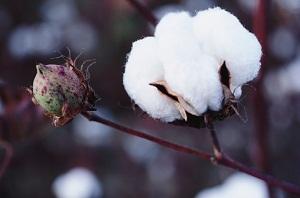Using AI to control energy for indoor agriculture
30 September 2024
Published online 7 May 2012

Plants sometimes respond to environmental stress — such as growing in a different habitat or domestication — by rearranging parts of their genome to help the plant adapt to their new situation. Transposable elements (TEs) are short sequences of genomic DNA that can relocate to another region of the genome or get copied over and over.
Some species of the cotton genus, Gossypium, have continually active TEs. To construct a timeline of evolutionary events involving TEs, Robin G. Allaby of the University of Warwick, United Kingdom, and colleagues studied these genetic movers and shakers in ancient cotton samples collected from South America and Egypt.
The researchers analysed the genomes of a cross-section of cotton seed samples from archaeological sites: two seed samples from Peru, each 1,000 and 3,750 years old, one 750-years-old sample from Brazil, and one sample about 1,600 years old from Egypt. The 1,000-year-old Peruvian sample was too contaminated for the researchers to identify. The two South American seed samples were identified as Gossypium barbadense, and the Egyptian sample was identified as Gossypium herbaceum.
Many important Egyptian crops, such as the grain crop Panicum miliacum, originated on the Indian subcontinent. But the Egyptian cotton sample is African in origin.
These ancient crops may harbour genetic diversity that endowed drought tolerance qualities.
The researchers compared these ancient species with the history of cotton domestication. The genomes of the South American cotton are relatively stable, with few changes even over vast distances and time. The TE profile of the G. herbaceum varies greatly from modern G. herbaceum, meaning its genome has undergone much change within the history of the plant's domestication and cultivation, perhaps in response to drought.
"The amount of adaptive evolution that domesticated crops are capable of within a short time frame is far greater than has previously been realized," says Allaby.
Jonathan F. Wendel, a botanical geneticist at Iowa State University, Iowa, believes that the ancient samples must be compared with a larger selection of TEs from modern cotton to solidify the crop's evolutionary history.
"These ancient crops may harbour genetic diversity that endowed drought tolerance qualities," says Allaby. "Such 'rediscovered' variation could be re-introduced into modern crops."
Francis C. Ogbonnaya, who recently left Syria-based International Center for Agricultural Research in the Dry Areas (ICARDA) as head of biotechnology to become manager of protection traits at Grains Research & Development Corporation in Australia, says, "These insights into the episodic/dynamic nature of environmental cues that drive evolution underscore the critical role of tapping into reservoirs of biodiversity, such as wild relatives of cultivated crops, that hold traits above and beyond what exist in modern cultivars."
These ancient genetic variations "could have an impact on food security, which would be a wonderful bridge between the ancient and modern worlds," adds Allaby. His team is currently examining samples of other ancient crops such as barley from the Egyptian site where the cotton sample was collected to determine whether beneficial traits can be bred back into modern crops.
doi:10.1038/nmiddleeast.2012.68
Stay connected: